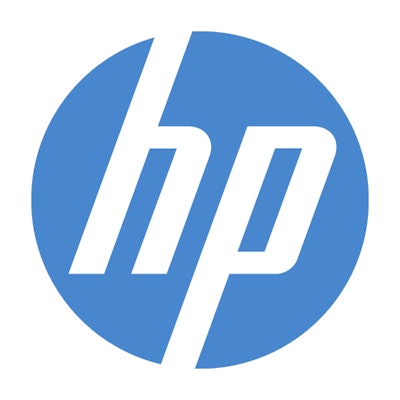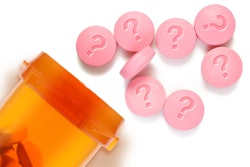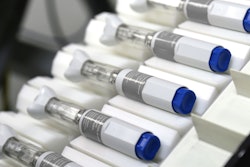
According to HP Inc., the outlook of the future includes using new inks and agents that will allow 3D printers to work voxel by voxel to apply specific capabilities or control material properties. For example, adding color information to show wear and damage to a part, or embedding codes for traceability or anti-counterfeiting.
Marga Bardeci, 3DP Applications & Business Development Manager of HP, Inc. spoke at the ISTA European Packaging Symposium in Amsterdam earlier this month, and said that in the future we could see only “on-demand” products with less resultant shipping and inventory due to products that will be produced locally.
Though 3D printing is used mostly in prototyping now, the manufacturing sector offers great potential for 3D printing, according to Bardeci, with the following potential impacts on the supply chain:
- Near sourcing – decrease in shipping
- Mass customization and personalization – lower inventory levels
- Parts on demand – service parts logistics
Bardeci cited a few examples of current 3D printing applications:
- During the design phase, using 3D printing for packaging prototypes, such as closures, caps and cosmetic caps. Benefits include quick turnaround to create new design possibilities and to test.
- Another tooling that is common in 3D printing is the robotic arm, which is light weight and can be adapted to the load which is needed.
- Exoskeletons to assist with loading heavy goods in logistics and industrial environments - particularly in automotive and postal and shipping companies. The benefit of 3D printing is to have personalized exoskeletons, not only by company, but by application.
- In commercial drone applications, 3D printing is used to create parts that are lightweight and cost effective.
- Spare parts – one printing company saved $36,000 Euro per year by 3D printing a single spare part.
- Perhaps the most telling example was that HP 3D printers have printed 140 3D printer parts– in effect, “the 3D printer is printing itself.”
Other benefits mentioned by Bardeci include the ability to replace metal parts with plastic, and savings that are “quite high” compared to previous technologies, with the biggest savings on short runs or personalized products.
For more information on HP Inc.’s 3D printers, click here.
For more information on the ISTA European Packaging Symposium, click here.
According to HP Inc., the outlook of the future includes using new inks and agents that will allow 3D printers to work voxel by voxel to apply specific capabilities or control material properties. For example, adding color information to show wear and damage to a part, or embedding codes for traceability or anti-counterfeiting.
Marga Bardeci, 3DP Applications & Business Development Manager of HP, Inc. spoke at the ISTA European Packaging Symposium in Amsterdam earlier this month, and said that in the future we could see only “on-demand” products with less resultant shipping and inventory due to products that will be produced locally.
Though 3D printing is used mostly in prototyping now, the manufacturing sector offers great potential for 3D printing, according to Bardeci, with the following potential impacts on the supply chain:
- Near sourcing – decrease in shipping
- Mass customization and personalization – lower inventory levels
- Parts on demand – service parts logistics
Bardeci cited a few examples of current 3D printing applications:
- During the design phase, using 3D printing for packaging prototypes, such as closures, caps and cosmetic caps. Benefits include quick turnaround to create new design possibilities and to test.
- Another tooling that is common in 3D printing is the robotic arm, which is light weight and can be adapted to the load which is needed.
- Exoskeletons to assist with loading heavy goods in logistics and industrial environments - particularly in automotive and postal and shipping companies. The benefit of 3D printing is to have personalized exoskeletons, not only by company, but by application.
- In commercial drone applications, 3D printing is used to create parts that are lightweight and cost effective.
- Spare parts – one printing company saved $36,000 Euro per year by 3D printing a single spare part.
- Perhaps the most telling example was that HP 3D printers have printed 140 3D printer parts– in effect, “the 3D printer is printing itself.”
Other benefits mentioned by Bardeci include the ability to replace metal parts with plastic, and savings that are “quite high” compared to previous technologies, with the biggest savings on short runs or personalized products.
For more information on HP Inc.’s 3D printers, click here.
For more information on the ISTA European Packaging Symposium, click here.
According to HP Inc., the outlook of the future includes using new inks and agents that will allow 3D printers to work voxel by voxel to apply specific capabilities or control material properties. For example, adding color information to show wear and damage to a part, or embedding codes for traceability or anti-counterfeiting.
Marga Bardeci, 3DP Applications & Business Development Manager of HP, Inc. spoke at the ISTA European Packaging Symposium in Amsterdam earlier this month, and said that in the future we could see only “on-demand” products with less resultant shipping and inventory due to products that will be produced locally.
Though 3D printing is used mostly in prototyping now, the manufacturing sector offers great potential for 3D printing, according to Bardeci, with the following potential impacts on the supply chain:
- Near sourcing – decrease in shipping
- Mass customization and personalization – lower inventory levels
- Parts on demand – service parts logistics
Bardeci cited a few examples of current 3D printing applications:
- During the design phase, using 3D printing for packaging prototypes, such as closures, caps and cosmetic caps. Benefits include quick turnaround to create new design possibilities and to test.
- Another tooling that is common in 3D printing is the robotic arm, which is light weight and can be adapted to the load which is needed.
- Exoskeletons to assist with loading heavy goods in logistics and industrial environments - particularly in automotive and postal and shipping companies. The benefit of 3D printing is to have personalized exoskeletons, not only by company, but by application.
- In commercial drone applications, 3D printing is used to create parts that are lightweight and cost effective.
- Spare parts – one printing company saved $36,000 Euro per year by 3D printing a single spare part.
- Perhaps the most telling example was that HP 3D printers have printed 140 3D printer parts– in effect, “the 3D printer is printing itself.”
Other benefits mentioned by Bardeci include the ability to replace metal parts with plastic, and savings that are “quite high” compared to previous technologies, with the biggest savings on short runs or personalized products.
For more information on HP Inc.’s 3D printers, click here.
For more information on the ISTA European Packaging Symposium, click here.





















